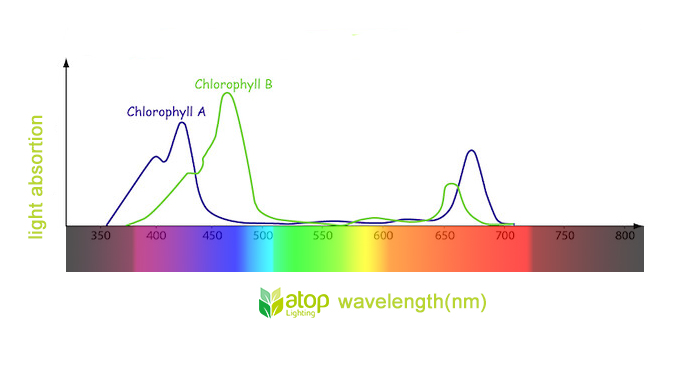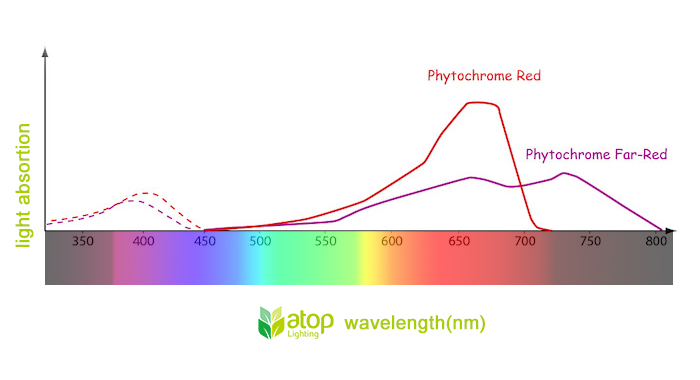The Impact on Crops of 730nm Far Red Light in LED Grow Light
Providing light or supplementing lighting for the planting room is not just a matter of turning on the lights and setting a plausible illumination time, and it may not be as simple as you think. It is significant to choose a low-energy consumption lamp equipped with a reasonable and accurate spectrum. It can be seen, the exact spectrum matters. It has the most influence on the growth of the corresponding plant and is the key to ensuring healthy and thriving plants. In terms of the spectrum, plant light manufacturers have been focusing on the red light and blue light, or the light of wavelength range 400-700nm, and how they interact with crops.
But it is important to note that far red light, which is within the wavelength of 700-850nm and falls between red light and infrared light, is also included in the spectrum of grow lights currently. Whether your plants need far red light? Have the product suppliers put themselves in their shoes and recommend the most suitable lighting spectrum when dealing with you? To get an idea of these, firstly, you need to know what the effects of far-red light are and which peak of far-red light has the greatest effect.
The biological principle of light reactions regarding far red
Plants have their own mechanism for responding to different kinds of light - they can sense different wavelengths of light and respond to them. The far-red light, which is near the end of the red light, falls between red light and infrared light, is invisible to the human eyes, but crops also have a unique reaction to it.
To understand the effects of far-red light on plants, we need to make certain of the biological principle of light reactions regarding far-red.
In order to perceive and respond to changes in the light intensity, quality, direction, and photoperiod of the surrounding environment, plants have evolved light-sensing systems -photoreceptors
The photoreceptor is the key for plants to perceive changes in the external environment. In the light reaction of plants, the most important photoreceptor is phytochrome, which absorbs red light and far-red light.
Phytochrome is a kind of pigment protein that has a reversal effect on the absorption of red and far-red light, participates in photomorphosis, and regulates the pigment protein used for plant development. It is extremely sensitive to red light (R) and far red light (FR), and has an important regulating effect on the whole growth and development process of plants from germination to maturity.
The phytochrome existing in plants is differentiated into two stable states: the red light absorption type (Pr, lmax=660nm) and the far red light absorption type (Pfr, lmax=730nm). These two light absorption types can be reversed under the irradiation of red light and far red light.
Studies on phytochrome have shown that the effects of phytochrome (Pr, Pfr) on plant photomorphosis include seed germination, de-etiolation effect, stem elongation, leaf expansion, shadow avoidance, and flower induction.
Therefore, the complete LED grow light scheme requires not only 450nm blue light and 660nm red light, but also 730 nm far red light. Deep blue light (450nm) and super red light (660nm) provide the spectrum needed for photosynthesis, while far-red light (730nm) controls the entire process from germination to vegetative growth to flowering.


The proper combination of deep blue (450nm), super red (660nm), and far red (730nm) provides better spectrum coverage and optimal growth pattern. (Atop lighting 300W horti-flag led grow light containing far red light, contact [email protected])
Impacts of 730nm far-red light on plants
1. Shadow avoidance
One of the most important impacts of 730nm far-red light on plants is shade avoidance. If a plant is exposed to only 660nm of super red light, it will feel as if it is under sunlight and will grow normally. If the plant is mainly illuminated by the far red light of 730nm, the plant will feel as if it is blocked by another higher plant from accepting light from the sun. So the plant will work harder to break through the blocking, which is to help the plant grow taller, but it does not necessarily mean that there will be more biomass.
If the plants you grow get stretched singularly, meanwhile long and lanky, too much far-red light may be the culprit. A plant like this is too weak to hold up the healthy flowers you’re hoping to cultivate. Far-red light can promote stem elongation, but the ratio of far-red light should be based on reasonable science. and scientifically verified.
2. Flower induction
Another important impact of 730nm far red light in horticultural lighting applications is that the flowering cycle can be controlled by the light of 660nm and 730nm without relying only on the influence of the season, which is of great value for ornamental flowers.
In nature, the conversion from Pr phytochrome (the red light absorption type) to Pfr phytochrome (the far red light absorption type) was mainly induced by super red light at 660nm (representing the sunlight during the day). While the conversion of Pfr phytochrome (the far red light absorption type) to Pr phytochrome (the red light absorption type) usually occurs naturally at night and can also be stimulated by the 730nm far red light.
It is generally believed that the control of plant flowering by phytochrome mainly depends on the ratio of Pfr/Pr. Therefore, we can control the Pfr/Pr value by controlling the addition of 730 nm of far red light, so as to control the flowering cycle more precisely.
3. Ensure the quality and quantity of flowering yields
Now that moderate far red light can properly promote stem elongation and keep the branches strong to ensure healthy flowers, as well as control the flowering cycle more precisely. So we can think about what we can do with it for our plants. Facts proved that a deliberate use of red light and far red light with the appropriate ratio in the LED grow light spectrum at the flowering stage of cannabis can ensure the quality and quantity of flowering yields.
4. Seed germination inhibition (for photophilous seeds)
Far-red (FR) light represses seed germination by inactivating phytochrome photoreceptors. The irradiation of far red light makes seeds feel as if they are not being lit by sunlight, and then they respond to this perception. Seeds are illuminated by far-red light, and their biological functions are aroused, so germination is suppressed.
The harm of excessive far-red light
Excessive far-red light would decrease chlorophyll and anthocyanins in the plants. The decrease will also occur in antioxidants. The former are responsible for your plants’ vibrant color. The latter protects both your plants and the people who consume them against free radicals.
There may be much that remains to be discovered about the effects of far-red light on plants. As a lighting manufacturer related to the horticulture industry, we are eager for this information. We look forward to your sharing with us other information you know about far red light. You can also contact us to order the LED grow light containing far red light mentioned above.

